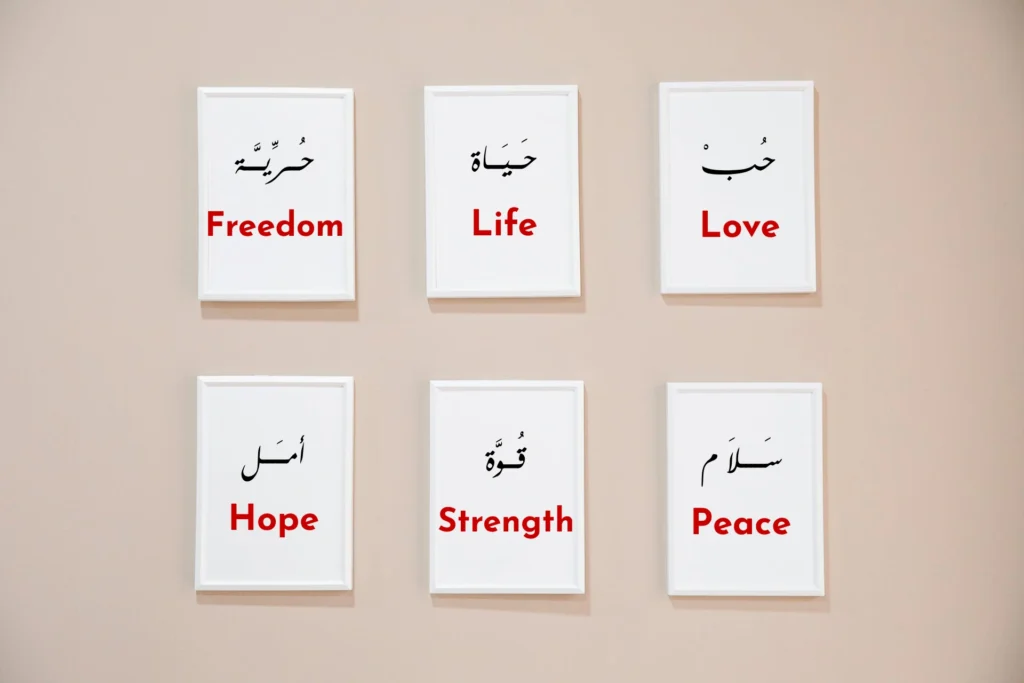The Foundation of Communication: Why Vocabulary Building Matters
As with any language, vocabulary building and having a wide range of words at your disposal are essential for expressing yourself clearly and comprehending what others say. The Arabic language boasts a vast and diverse vocabulary, encompassing over 12 million words. This rich linguistic heritage reflects the depth of Arabic culture and its profound influence on various fields of knowledge. Of course, it’s possible to get by building vocabulary in the earliest stages with just a handful of common greetings and phrases, but true mastery requires knowledge of thousands upon thousands of lexical items. The good news is that Arabic, like all languages, is built on systematic patterns that make vocabulary building both enjoyable and efficient when approached strategically. In this blog post, we will focus on an important aspect: vocabulary building in the Arabic language. But how can you build your vocabulary in Arabic? What are the best strategies and techniques for learning new words and phrases? How can you remember and use them in different contexts and situations? These are some of the questions that we will answer in this blog post. We will also provide you with some examples to help you practice and reinforce your vocabulary learning. So, let’s get started! What Are the Phases of Vocabulary Building in the Arabic Language? Building vocabulary in the Arabic language involves several phases, such as: Why is Vocabulary Building Important? Building vocabulary is important through learning the Arabic language for several reasons, such as: How to Build Vocabulary in Arabic? There are many ways to build your arabic vocabulary, but here are some of the most effective and proven methods that we recommend: By learning the common roots and their meanings, you can expand vocabulary and guess the meaning of unfamiliar words. You can also use affixes, such as prefixes and suffixes, to modify the meaning and function of words. For example, the prefix -م (m-) can turn a verb into an name of place, such as مكتب (office), and the suffix ة- (-ah) can turn a noun into a feminine noun, such as مكتبة (female writer). You can also use reference materials, such as dictionaries, thesauruses, and glossaries, to look up the meaning, pronunciation, and usage of words. How to Increase Vocabulary in Arabic? Increasing your Arabic vocabulary is not only about quantity, but also about quality. To increase your vocabulary in Arabic, you need to follow these steps: How to improve vocabulary in Arabic? Improving your vocabulary in Arabic is not only about learning new words, but also about using them correctly and appropriately. To improve your vocabulary in Arabic, you need to pay attention to the following aspects: Examples for Vocabulary Building in Arabic To help you apply the methods and techniques that we have discussed, we have prepared some examples and exercises for vocabulary building in Arabic. You can use these examples to practice and reinforce your vocabulary learning, and to check your progress and understanding. Example 1: Word Roots, Affixes, and Reference Materials In this example, we will use the word root, affixes, and reference materials to learn new words and phrases in Arabic. We will use the root س-ل-م (s-l-m), which means “to be safe, secure, or peaceful”, and from it, we can form many words, such as: We can also use affixes, such as prefixes and suffixes, to modify the meaning and function of these words. For example: Conclusion We hope that this blog post has given you some helpful tips and strategies for vocabulary building in the Arabic language, alongside some examples that can help you to apply the highlighted tips we’ve mentioned in this article. Remember, as you expand your Arabic vocabulary, you’ll gain the confidence to navigate conversations, comprehend texts, and express yourself with fluency and precision. Also, keep in mind that the key to success is to practice regularly and expose yourself to new words as often as possible. Be confident, take your first step and don’t hesitate to ask for help!
The Foundation of Communication: Why Vocabulary Building Matters Read More »

